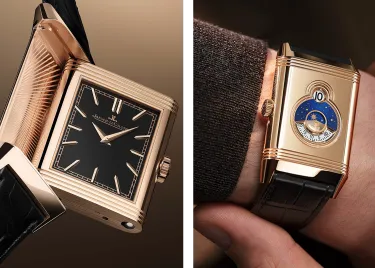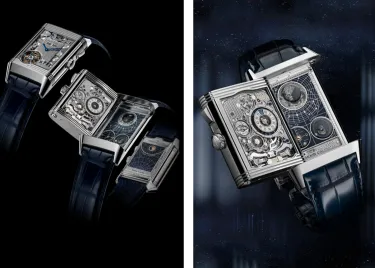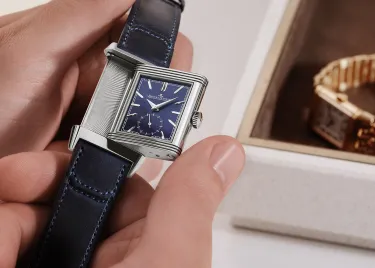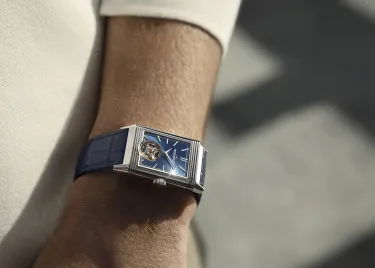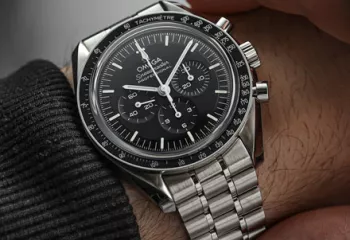Focus
Jaeger-LeCoultre Reverso, the must-have
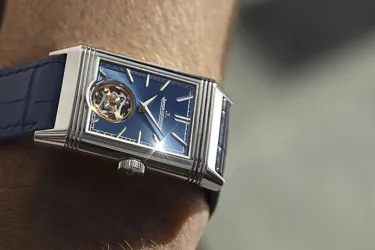
The Reverso is probably one of Jaeger-LeCoultre's most famous pieces. Since its creation in 1931, the emotion has been unwavering. Faced with this manifesto of style, the wonderment remains intact, year after year. With its pure, almost discreet lines, the Reverso is a pillar of elegance for all generations and cultures.
On this iconic timepiece, the back is the front. The place where rare crafts such as engraving, gem-setting and enamelling are expressed, to meet all desires, whether simple or sophisticated. It is the place where the company's watchmaking expertise and unbridled inventiveness are displayed, in the form of a second dial on the Duetto and Duoface models.
A substantive work
In order for the piece to remain in the firmament of style, it was necessary to carry out a respectful evolution, while keeping in mind a few imperatives. Firstly, to preserve the intransigence of this exceptional watch, which concentrates the talent of the Manufacture, its elegance and its contemporary spirit; secondly, to clarify the collections by introducing three stylistic expressions, Reverso Classic, Reverso Tribute and Reverso One, with very distinct universes and aspirations; and finally, to structure the sizes by offering three options: Small, Medium and Large for the Reverso Classic collection. Jaeger-LeCoultre has also introduced an automatic movement on many of the models in the Reverso Classic line for true user comfort.
A legendary story that begins with a challenge
To be able to wear a watch while playing polo and still protect it! So where does the Reverso come from? In 1930, César de Trey, an acquaintance of Jacques-David LeCoultre from the Parisian company Jaeger SA, went to India, where some British army officers had developed a passion for polo. Seeing them play and in order to preserve their watches, he had the idea of a dial that could be turned over. He thus approached LeCoultre. A French industrial designer, René-Alfred Chavot, was commissioned to give it shape. On March 4, 1931, the Paris Patent Office received an application for the registration of "a watch capable of sliding into its housing and completely turned over". 9 months later (!), the legend was born. And with it, one of the rarest movements in fine watchmaking: a "form" movement, i.e. a movement whose geometry has been specially created to fit into the case designed for it. The movement of the Reverso is therefore rectangular.
Focus on a "Classic”
The "Classic" embodies this original status of the Reverso. Its Art Deco inspiration, its geometrical case, its gadroons, its straight Arabic numerals and the railway of its minute track are amused by the passing of time and the fashions that come and go. Unaffected by the vagaries of time and inaccessible to fluctuations, the Reverso Classic draws its strength from the golden ratio, the ratio between the length and width of its case, which borrows from the Pythagorean tradition born in Antiquity.
Available in three sizes, the Reverso Classic models belong to both a male and female wardrobe. More than just an accessory, they are a sign of allure, self-confidence and a certain idea of the human being, where beauty belongs to all ages. The reworked case lugs are thinner and more fluid on the wrist. The pearl decoration on the stretcher subtly signals the watch's refinement. The black and white dial on the front, common to all models in the Reverso Classic collection, is textured - guilloché in the centre and vertically brushed on the outside. The back of the steel piece is a privileged space to let one's imagination run wild, for example through an engraving. With a delicate gesture, it reveals what you want to say about yourself. Or one keeps the secret, well kept in the shelter of the stretcher.
The Reverso is a grand lady of watchmaking. With its pure lines, it retains its status as an icon of elegance despite the passing of time.

